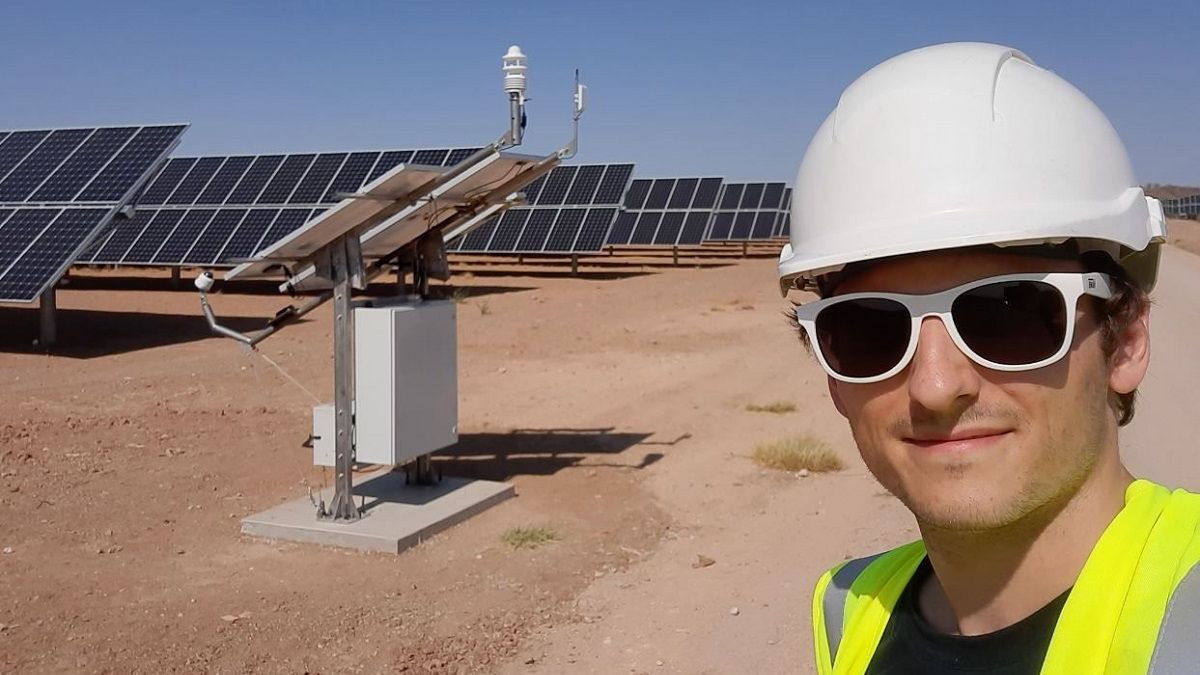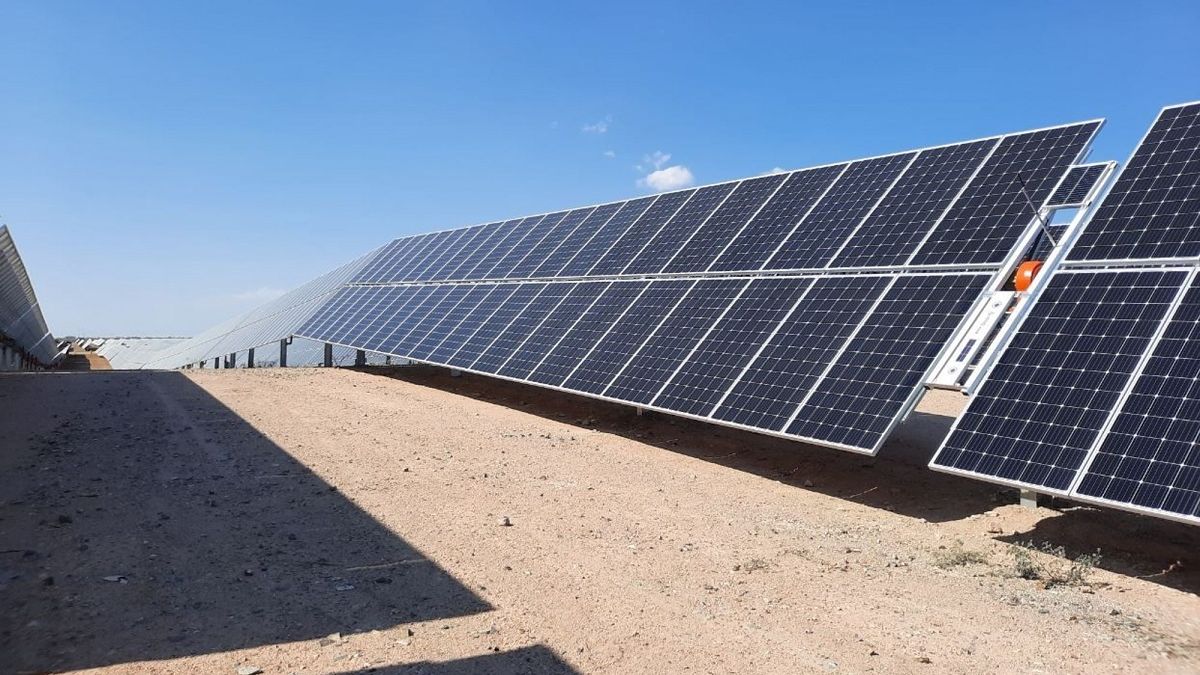Soiling Measurement Guide Part 1/2: Choosing the right soiling sensor
Thore Müller, 16.07.2024.
In 2017, I began my career as a research engineer, taking my first position in Chile. From the very start, I was responsible for the study and measurement of soiling, a critical factor for the economic evaluation of utility-scale PV power plants worldwide.
My journey has taken me across Chile and Mexico, where I personally installed about 50 soiling measurement stations in power plants across both countries. Till 2021 I have led the research activities at the El Aguila Outdoor Research facility in the Chilean Atacama Desert, where we had installed soiling sensors from five different manufacturers and covering several different measurement principles
For every hour installing sensors, I've spent what feels like a hundred hours analyzing data—not only my own but also data from third parties, partners, and clients. Based on this extensive experience, here are my top lessons learned and advice for anyone involved in the field.

Installing soiling measurement station in Mexico in 2021 (Photo by Thore Müller).
Choosing the right measurement principle
Soiling is the difference between the electrical output of two photovoltaic devices, one "clean" and one "dirty," installed so that the only difference between their (corrected) measurements is the amount of light blocked or scattered due to soiling.
While this may appear straightforward, in practice there are three main difficulties:
#1) Ensure that the only difference between "clean" and "dirty" is soiling
The easiest, and in my opinion also most accurate way, to achieve accurate soiling measurements is by using pairs of either full-size modules, mini-modules, or reference cells. Using two of the same kind means there should not be any difference in behavior (e.g. temperature) that needs to be accounted for. In practice, however, things can be a bit more complicated.
For example, I remember one rooftop application, where two modules were disconnected from their respective strings and connected to an IV-curve tracer for soiling measurement. A module in the middle of the closely packed array was selected as the "dirty" reference, and a module at the border was selected as the "clean" reference so it could be easily cleaned at regular intervals. However, due to its location at the border, the "clean" reference received much more cooling from the wind than the one in the middle, resulting in higher efficiency and leading to an overestimation of soiling losses.
To avoid this, you can measure the temperature of each module involved and compare the temperature-corrected output. In part 2 of this guide, I will go into detail and present more examples.
#2) Choosing photovoltaic devices whose electrical output is representative of the problem at hand
The accumulation of dust is a complex phenomenon and may even vary across a single module. Ideally, two full-size modules—preferably the same as those used or to be used in the power plant—are connected to an IV-curve tracer that measures both the difference in short-circuit current and maximum power output.
This, however, comes at a cost. First, it requires more equipment than installing two small reference cells, and second, it requires someone to manually clean a full-size module, potentially in very remote and inaccessible locations.
As a side note, pairs of pyranometers are not suitable for measuring soiling because you cannot expect the hemispherical dome to collect soiling at the same rate as a flat surface would.
#3) Ensuring a fail-safe (low maintenance) and affordable measurement
The easiest way to ensure a fail-safe (low maintenance) and affordable measurement is to use calibrated reference cells or mini-modules connected to a data logger measuring their short-circuit current. These systems are cheaper to purchase, install, and clean (some kits include an automatic wash system), but come at the cost of lower but still very good "informative value".
Balancing accuracy and cost in soiling measurement
To achieve both good accuracy and informative value, while keeping the cost reasonable, one effective approach is to combine a full-size module as the "dirty" reference with a self-cleaning reference cell as the "clean" reference. However, this method introduces a new challenge: the assumption that both devices operate under the same conditions is no longer valid. While it is reasonable to assume that both receive the same irradiation, their internal cell temperatures are likely different. Therefore, the temperatures of both devices need to be measured and used to calculate a correction factor.

Left: Measuring soiling using full-size modules (Foto: Kintech Engineering), Center: Measuring soiling using two reference cells (Foto: NREL), Right: Combination of full-size module and self-cleaning reference cell (Foto Seven Sensor)
The problem with optical measurements
Unlike electrical sensors, optical sensors do not directly measure the behavior of a PV module. Instead, they measure the scattering of light on a glass sample to predict the behavior of a real module. If the glass is clean, almost no light is scattered back; as the amount of dust and dirt on the glass increases, the amount of scattered light measured by a photodiode also increases.
Optical sensors are generally easier to install, more affordable, and require minimal maintenance. However, based on my experience and feedback from clients and partners, these sensors are known to produce inaccurate results. The primary issue is the calibration process. Dust and dirt consist of various particles with different sizes and optical properties, to which optical sensors are highly sensitive. Calibration involves "teaching" the sensor how much scattering corresponds to specific power loss. Typically, calibration is performed in the lab using test-dust, but the dust at the actual site will differ.
Although manufacturers recommend repeating calibration in the field, it can be quite complex. The particle composition of soiling can change seasonally, and effective calibration requires the sensor to be sufficiently dirty. I have seen cases where, even after years of measurements, teams have not been able to properly calibrate their optical sensors. For this reason, I strongly recommend preferring electrical measurements over optical measurements. From this point forward, I will limit my advice to the use of electrical soiling sensors.

Optical soiling measurement in a representative position: in plane of array, in the middle of a row. (Photo by Thore Müller).
How to choose the right system for my application? Think about what you need the data for!
The gold standard for soiling measurement
The ideal soiling measurement system comprises of two full-size, mono-facial modules corrected for temperature and irradiance, connected to an IV-curve tracer, and installed in the middle of a tracker or fixed-tilt structure. One of these modules should be cleaned daily, including weekends and holidays, approximately three hours before noon, by an experienced and meticulous maintenance person using a microfiber cloth.
While this standard can be achieved in a university research setting, it is undoubtedly challenging to implement in an industrial environment. Therefore:
For Performance Ratio (PR) correction make sure your sensors are installed directly on the module structure or tracker.
The performance ratio (PR) is a crucial metric in utility-scale photovoltaic (PV) systems, used to assess the efficiency of a PV plant by comparing the actual energy output to the theoretical maximum under ideal conditions. When soiling is excluded from the EPC PR-guarantee, it is essential to correct for it. My clear recommendation is to install sensors in the most representative location possible, even if this means using reference cells instead of full-size modules.
Measure for at least one year to determine loss factors for yield assessment
Most yield estimation software (e.g., PVSyst) allows users to input monthly average soiling loss factors. Some developers install meteorological stations, including soiling measurements, months before construction begins to assess site conditions and soiling losses. For this purpose, I recommend prioritizing low maintenance and long duration over highest accuracy. Site conditions might change due to the construction of the plant, and since the power plant is not yet installed, you can't place the sensors on the module structure, meaning that the soiling the modules experience later might be slightly different anyway.
To fit a predictive model, don’t forget to measure precipitation
If you want to translate your soiling measurements from one site to another, you need a model. To train such a model, ensure you measure not only the expected output, the soiling level, but also the most important inputs: precipitation and other environmental conditions. Precipitation is the most important input for any soiling prediction model and without accurate precipitation measurements to accompany your soiling data, you cannot train your model effectively. Using satellite data as a replacement is possible, but it only works well when comparing averages over a longer time period.
To optimize cleaning schedules you need models, not measurements.
Knowing the current soiling losses doesn’t necessarily inform you if immediate cleaning is necessary. Cleaning is an investment and its cost should be weighed against its benefits. The value of a cleaning is equal to the difference in energy production due to the cleaning until the next rain (at which point it usually does not matter anymore if you cleaned).
For planning cost-effective cleaning activities, you need a projection of soiling losses into the future, generated from a model. Of course soiling measurements are a crucial input to such models. By comparing different scenarios (e.g., waiting for the next rain vs. cleaning in a week, two weeks, or a month), you can determine the optimal cleaning time that maximizes return on investment. PVRADAR allows optimizing cleaning strategies based on soiling predictions from various precipitation data sources and soiling models, including our own in-house model.
What is your experience?
Do you agree? We'd love to hear about your experiences and thoughts on soiling measurements. Have you faced similar challenges or discovered different solutions?
Please note that these recommendations are based on our personal experience in the field. We are independent and have no connection with any soiling sensor manufacturer or soiling measurement provider and therefore purposely did not mention or recommend specific brands in this article.
However, if you’re looking for advice for your measurement campaign or purchase recommendations, contact us for a free first consultation. We’re always happy to review your setup and provide personalized recommendations.
